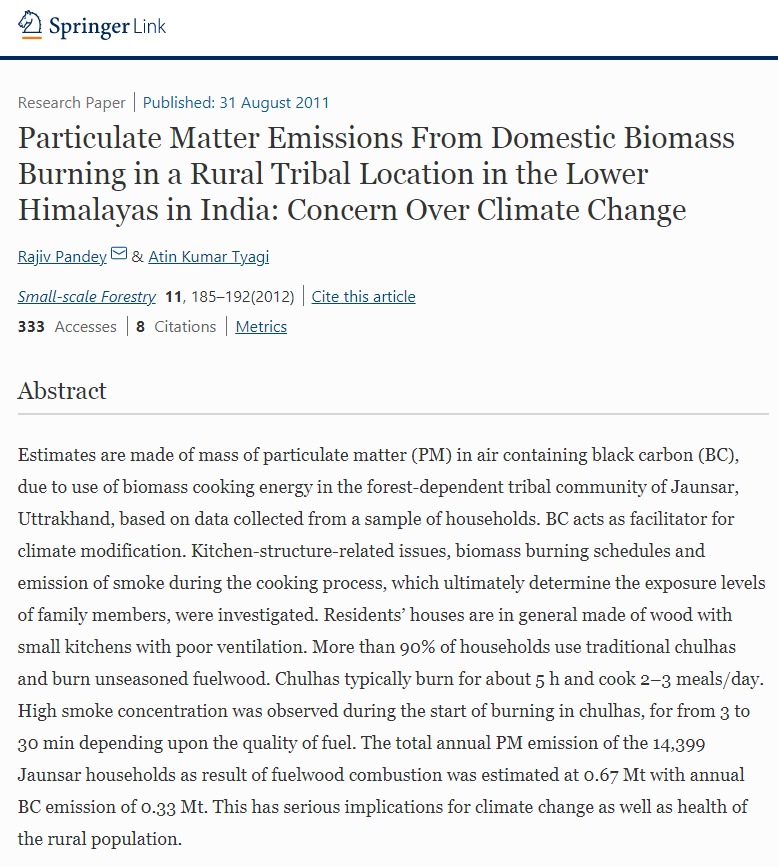
Estimates are made of mass of particulate matter (PM) in air containing black carbon (BC), due to use of biomass cooking energy in the forest-dependent tribal community of Jaunsar, Uttrakhand, based on data collected from a sample of households. BC acts as facilitator for climate modification. Kitchen-structure-related issues, biomass burning schedules and emission of smoke during the cooking process, which ultimately determine the exposure levels of family members, were investigated. Residents’ houses are in general made of wood with small kitchens with poor ventilation. More than 90% of households use traditional chulhas and burn unseasoned fuelwood. Chulhas typically burn for about 5 h and cook 2–3 meals/day. High smoke concentration was observed during the start of burning in chulhas, for from 3 to 30 min depending upon the quality of fuel. The total annual PM emission of the 14,399 Jaunsar households as result of fuelwood combustion was estimated at 0.67 Mt with annual BC emission of 0.33 Mt. This has serious implications for climate change as well as health of the rural population.